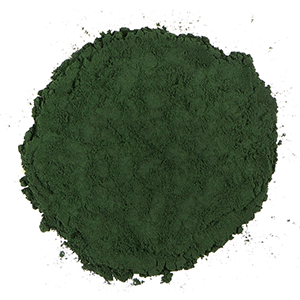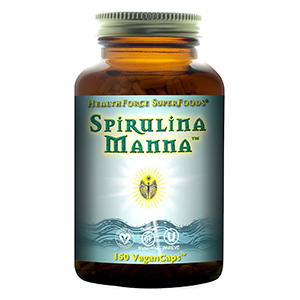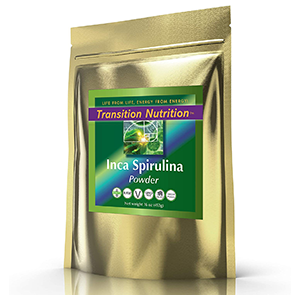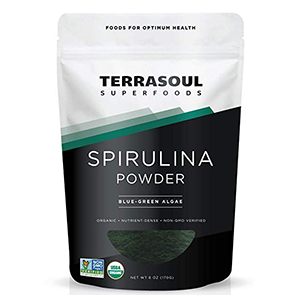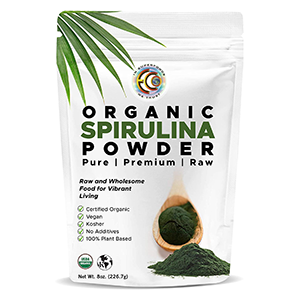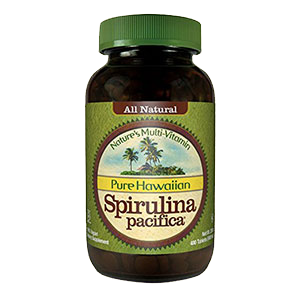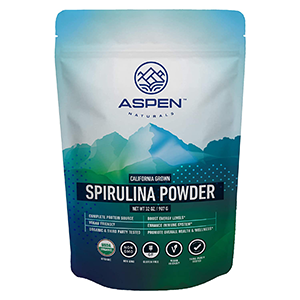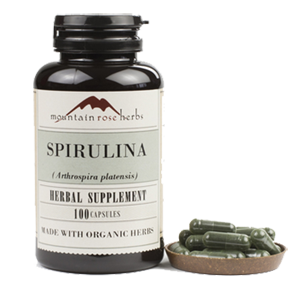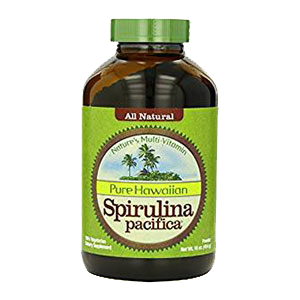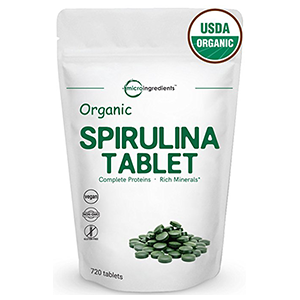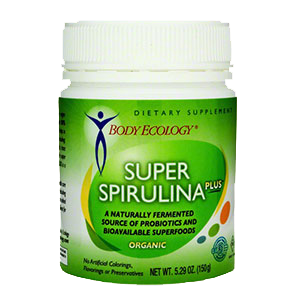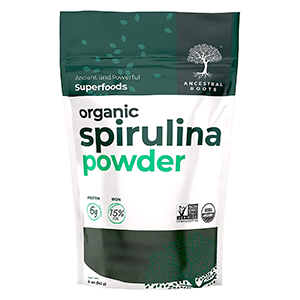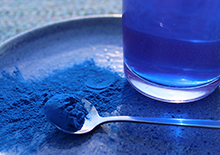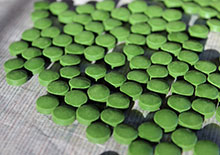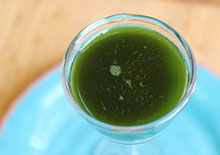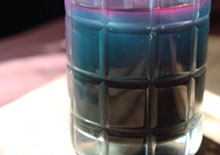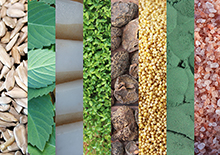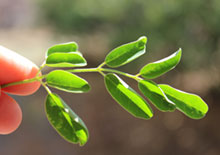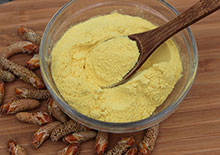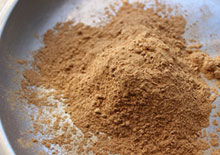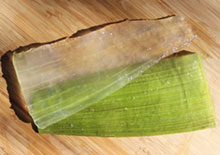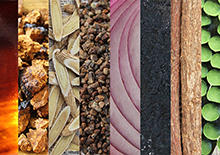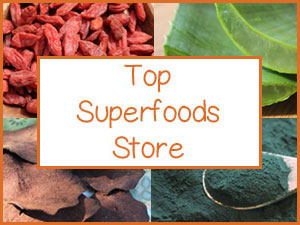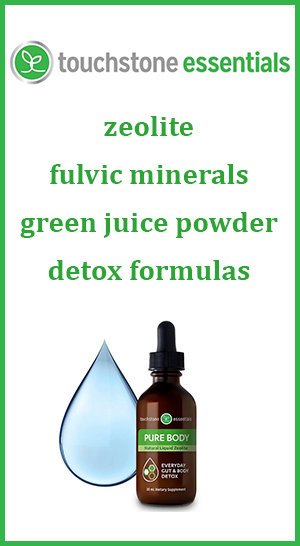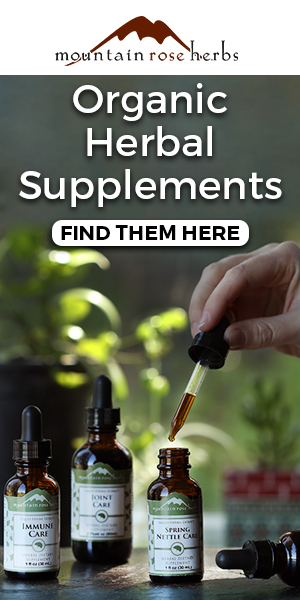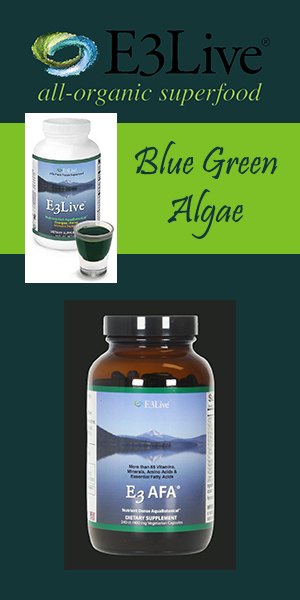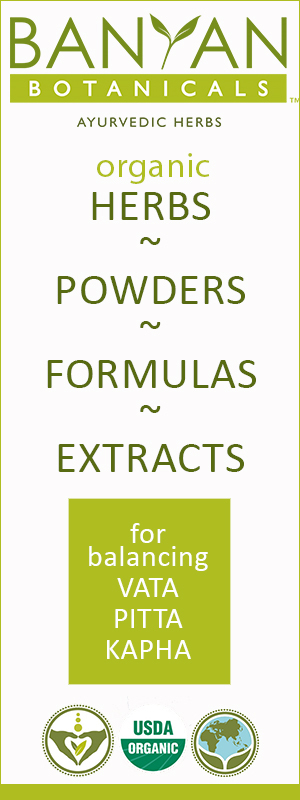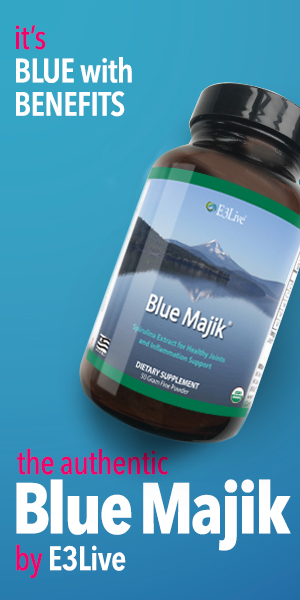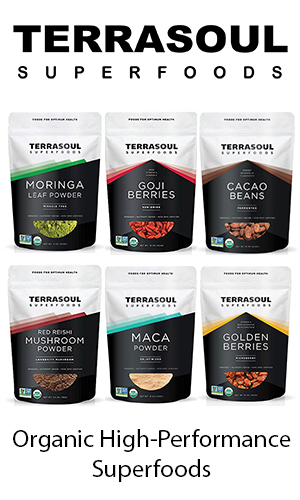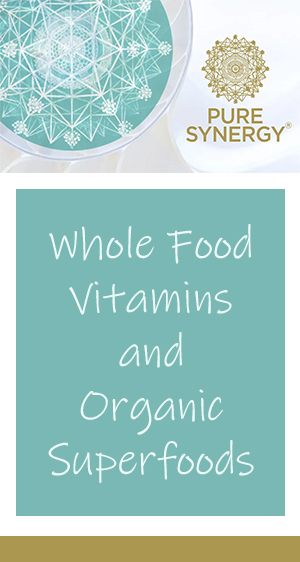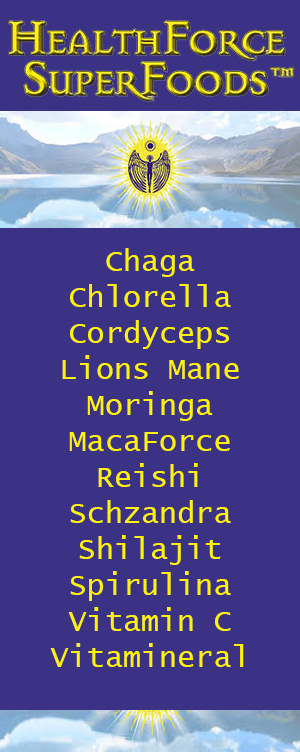- Home
- Top Superfoods
- Spirulina
Spirulina Benefits, Superfood Protein and Multivitamin
Intro | What is Spirulina? | Cultivation Techniques | Growing Your Own | Benefits | About Cyanotoxins | Quality | Recommended Products | How to Use | Precautions | Shop
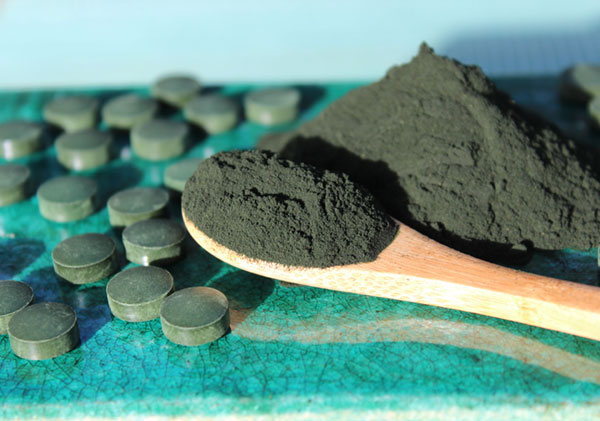
Spirulina is a species of edible blue-green algae that naturally grows wild in tropical and subtropical ponds, lakes and alkaline waterways.
The genus Arthrospira is among the diverse class of single-celled cyanobacteria identified to have played a primary role in creating the Earth's life-sustaining atmosphere nearly 2.3 billion years ago.
Along with phytoplankton, this group of ancient algae also contributed to the basic foundation of the food chain, essential to developing some of the first life forms on the planet.
Table of Contents
Intro | What is Spirulina? | Cultivation Techniques | Growing Your Own | Benefits | About Cyanotoxins | Quality | Recommended Products | How to Use | Precautions | Shop
Acquiring energy through the process of photosynthesis, spirulina is particularly known for its ability to convert sunlight into green concentrated sources of protein, fatty acids, antioxidants as well as certain vitamins and minerals.
Historically, it was utilized as a nutritional food source in regions of Lake Texcoco or Tenochtitlan (present-day Mexico City) by Mesoamerican cultures like the Aztec peoples, who called it "tecuitlatl." Likewise, it was also harvested by civilizations surrounding the large, shallow fresh waters of Lake Chad bordering West and Central Africa.
Spirulina was coined "the best food for the future" because of its excellent capacity at producing high quality condensed complete protein and essential nutrients more efficiently than many other foods or microalgae.
Yielding more protein on less land and water than any other staple
crop, it has in the last several decades been applied for use as a
cultivated food in self-sufficient water tank systems in parts of West
Africa susceptible to soil deficiency and subsequent malnutrition. In
these communities, the children are known to call spirulina mixed into
water their "green medicine."
It was also popularized by NASA when it was successfully utilized as a nutritional food supplement by American astronauts, after which time it was extensively researched as a potential cultivar for long-term space travel. (*) Moreover, in 2016, it was again proposed by NASA as a "possible food source" for "enabling a sustained presence on Mars." (*)
Spirulina also makes an ideal top 10 superfood for modern-day living because of its energizing nutrients and detoxifying compounds, both of which promote heightened mental acuity and increased immune response. The blue-green pigment called phycocyanin is, in addition, a potent anti-inflammatory agent helpful for many common health issues.
Along with phycocyanin, Arthrospira contains a vast array of other antioxidants within its
spiral-shaped cellular structure, including chlorophyll, beta-carotene and zeaxanthin.
Additional top nutrients include, B vitamins, gamma-linolenic acid (GLA), iron, nucleic acids and various polysaccharides.
Dietary supplements, typically used as a powder or in tablet form, are usually cultivated in controlled and monitored man-made reservoirs, not obtained from wild sources that can be potentially contaminated with harmful cyanotoxins.
While it is a non-toxic algae, it is best to consume commercial products that maintain purity and nutritional composition. When properly grown, harvested and dried, it can be one of the most potent superfoods available to humans.
The microalgae, depending on one's taste perception, is known to have either a subtly sweet nutty characteristic or can have a "green" seafood-like flavor. These features, however, are sometimes contingent on the quality of the product.
It is more frequently consumed as a green superfood powder, often added to blended drinks or used by many health enthusiasts as a salad topping.
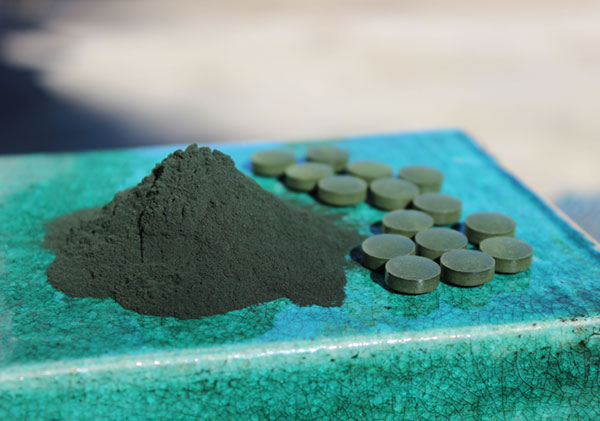
What is Spirulina?
Spirulina, from the genus Arthrospira, is an edible form of blue-green algae or cyanobacteria that is safe to consume by humans, animals and aquatic life. Its name is derived from the Latin word 'spirula' which means 'small spiral.' This is because, on a microscopic level, it is made up of tightly coiled or loose spiraling cellular strands.
Growing as a free-floating layer close to the water's surface, the blue-green colored biomass thrives in saline alkaline water bodies with a pH around 8.5 and prefers temperatures that range between 86-104°F (30-40°C).
It naturally grows wild in tropical and subtropical regions of Mexico, Central America, Asia, Central Africa and the Southern U.S. However, it is usually not the type of microalgae (or "microscopic algae") that is harvested from wild regions, but is typically cultivated in a controlled and monitored environment, such as shallow water ponds or tank systems.
Aquaculture scientist, author and philosopher Christopher Hills, often called the "father of spirulina", is one of the first early pioneers acknowledged for his major role in popularizing spirulina as a global food source. His research culminated in the successful large scale production of spirulina and first commercial product, distributed by the company Light Force.
Used as both a compressed dietary supplement and whole food green powder, products are commonly manufactured in areas such as Hawaii, Mexico, Africa, Japan and Ecuador, locations ideal for outdoor cultivation.
Note: Its spiral microscopic shape also represents the spiral shape of our galaxy and symbolizes, in many ways, the process of human evolution.
The two main Arthrospira species produced commercially are Arthrospira platensis and Arthrospira maxima with A. platensis
making up most of the world's dietary supply.
Industrially, these cyanobacteria species have been used as a feed source in the aquaculture, aquarium and poultry industries. Flakes are frequently used in fish food products all over the globe. It is also utilized in cosmetics, skin care products and by the food and beverage industry as a natural coloring agent.
Spirulina Cultivation Techniques
Spirulina is "farmed" using either an open pond system or a closed system with each method having their own separate advantages and disadvantages.
Most commercial production facilities use open pond systems, which involve outdoor shallow raceway-like water bodies that are continuously mixed with a type of paddle wheel.
When given the proper amount of light, nutrients and temperature, the microalgae form thick mats or "blooms" on the surface layer of the water. The algae biomass, in the form of a green paste or purée, is then collected, filtered and dried, often in noodle-like pieces, and transformed into a fine powder.
Arthrospira is occasionally manufactured using closed indoor systems which involve a more controlled greenhouse-like setting. It can likewise employ advanced photobioreactor technologies, similar to how marine phytoplankton, and sometimes chlorella, is produced (*), but this is not as common.
Growing Your Own Spirulina
Small-scale outdoor greenhouse cultivation or homemade open water tank systems have been effectively achieved in many moderate climates around the world. (*)
It is also possible to home grow spirulina with a special DIY aquarium tank kit and a live solution. According to our research, not first-hand experience, it is known to be easier to produce than other microalgae species but does take some practice and experimentation to grow successfully.
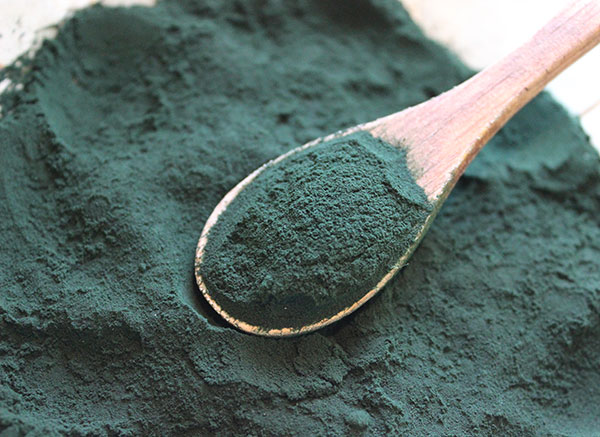
Spirulina Benefits to Health
1) Energizing Protein-Rich Food
2) Spirulina Nutrition
3) Contains Antioxidants: Carotenoids, Phycocyanin and Chlorophyll
4) Cleansing to the Blood and Supports Detoxification
An Energizing Protein-Rich Food
One of the most phenomenal things about this top superfood is its ability to efficiently synthesize concentrated amounts of protein in relatively short periods of time, taking in sunlight energy and converting it into a green super fuel for the body.
Arthrospira platensis, when dried, contains an average total protein content of 60%, but can range anywhere between 50-70% depending on the quality. It is one of the highest protein-rich foods in the plant kingdom and includes all the essential amino acids making it a complete protein source.
The Arthrospira species, in addition, do not have cellulose walls which make its protein content and other nutrients more digestible and bioavailable when consumed. Powders and supplements thus have a high PER or "protein efficiency ratio." Each gram of spirulina protein is believed to be four times more absorbable than the same gram of protein found in red meat.
Between one teaspoon and one tablespoon of powder, mixed into blended protein shakes or smoothies, can help to increase protein intake for those following a vegan, raw vegan or vegetarian diet.
Quality Spirulina Powder Typically Contains:
1T = 4 - 5 grams of protein
As many people today are choosing to eat less animal protein, this microalgae can be a great vegan alternative to ensure protein and amino acid requirements are being met. We also personally love the idea of not only eating low on the food chain, but also the concept behind eating one of the very first foods of creation!
Spirulina Nutrition
Along with an ample amount of protein content, spirulina also contains a nutritious spectrum of vitamins and minerals and is particularly high in beta-carotene, the B complex vitamins thiamine, riboflavin, pantothenic acid and pyridoxine (B6) in addition to vitamins E, K1, K2 as well as significantly high amounts of iron.
It is also a source of vitamin C, iodine, magnesium, manganese and several forms of bioavailable sulfur such as sulfur-bearing amino acids and the sulfated polysaccharide called calcium-spirulan, a potent antiviral substance.
While spirulina has been found to have high levels of vitamin B-12, this is in the form of pseudovitamin B-12 which is "biologically inactive in humans." It is therefore not considered a reliable source of this essential nutrient. (*)
Like hemp seed, dried powders or supplements are also rich in GLA or gamma linolenic acid. GLA is known to reduce inflammation, help to balance hormones, treat eczema, relieve joint pain, ease the symptoms of PMS and decrease breast tenderness in women.
It also includes a small amount of other polyunsaturated fatty acids like linoleic acid, arachidonic acid, ALA, EPA, DHA and stearidonic acid.
As advertised on product labels, one teaspoon of powder can have about 32 mg of gamma-linolenic acid or GLA per serving. According to Nutrition Data a tablespoon has 57.6 mg of omega-3 fatty acids and 87.8 mg of omega-6 fatty acids.
One published review reports that "the National Aeronautics and Space Administration (NASA) has asserted that the nutritional value of 1000 kg fruits and vegetables equals that of one kg spirulina. This property of spirulina has enabled it to be used in long-term space missions."
Used in Africa as a Nutritional Supplement
Spirulina and its small scale cultivation is also highly valued as a nutritional supplement in West and Central Africa, where it has been utilized for decades to treat malnutrition and starvation.
In the 1970's it was declared the "best food for the future" at the United Nations World Conference. The UN later joined with humanitarian groups in the mid 90's to form the Intergovernmental Institution for the Use of Micro-Algae Spirulina Against Malnutrition. (*)
Used extensively in the Republic of Kenya as well as other parts of Africa, one study indicates that a dose of 10g per day "seemed to significantly and quickly improve the nutritional status of undernourished children."
Contains Antioxidants: Carotenoids, Phycocyanin and Chlorophyll
The Arthrospira species is known to contain a full spectrum of antioxidants including phenolic acids, tocopherols, carotenoids, like beta-carotene, zeaxanthin, lutein as well as chlorophyll and spirulina's well-known blue-green pigment phycocyanin.
These are substances that help to boost immune functions, prevent free radical damage to cells, stimulate the repair of oxidative damage to DNA as well as protect and nourish the eyes and the skin. Spirulina additionally supports the body's production of the enzymatic antioxidant called superoxide dismutase (SOD). (*)
Underneath spirulina's blue-green color are the red-orange and yellow-orange carotenoid pigments such as beta-carotene, zeaxanthin, lutein and cryptoxanthin. The microalgae is particularly high in beta-carotene, which converts to vitamin A in the body.
Zeaxanthin and lutein are two components that make up the retina of the eye and protect it from UV damage. These nutrients, when consumed thorough dietary sources, are shown in some research to encourage healthy vision and may help to guard against various eye disorders like macular degeneration and cataracts. (*)
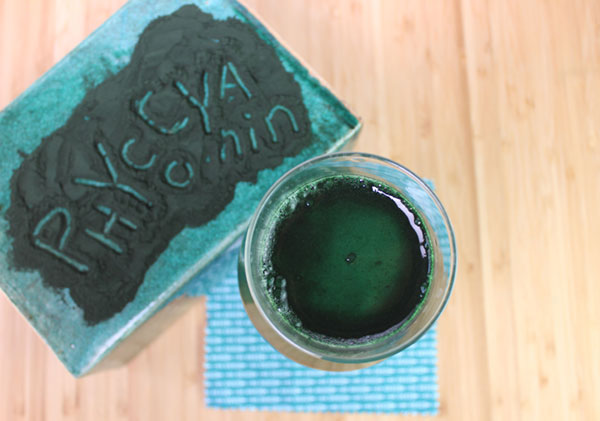
Benefits of the Blue-Green Pigment, Phycocyanin
Phycocyanin (or c-phycocyanin) is a water soluble pigment-protein found in both the microalgaes, spirulina and blue-green algae (AFA). The name phycocyanin comes from the word "phyco" meaning "algae" and "cyan" which is a color variation of blue-green.
This is one of the prominent components present in dried spirulina that has been recognized in scientific research to exhibit potent anti-inflammatory effects potentially helpful as a dietary supplement for those with cardiovascular and neurodegenerative diseases.
According to research presented in the journal Cardiovascular Therapeutics, "A group of hamsters fed an atherogenic diet supplemented with Spirulina or its ingredient phycocyanin exhibited lower total cholesterol, LDL and VLDL cholesterol whereas HDL cholesterol was not affected." It was also in conclusion reported that "findings from human clinical trials are largely consistent with the hypolipidemic effects of Spirulina observed in the preclinical studies."
In a other reviewed research it was stated that "C-PC [phycocyanin] is a potential neuroprotective agent that can be applied to treat oxidative stress-induced neuronal injury in neurodegenerative diseases, such as ischemic stroke, Alzheimer's disease, and Parkinson's disease." (*)
Phycocyanin is one of the primary compounds found in cyanobacteria that was initially biologically useful in the Cambrian geological era when the amount of ultraviolet radiation penetrating the Earth's atmosphere was much greater than it is today.
In a 2015, a published study "demonstrated for the first time the resistance of the free-floating filamentous and edible cyanobacteria Arthrospira to high doses of gamma rays [gamma radiation]." It is likewise believed by some health authorities, that when we ingest these blue-green pigments, these same properties become available to our own cells as useful sun shields.
Cleansing to the Blood and Supports Detoxification
Spirulina contains high concentrations of the green pigment chlorophyll, a known blood purifier as well as lymph and liver cleansing substance. Chlorophyll-rich edible foods and drinks have healing and protective assets that help detoxify the tissues, balance body pH and are an energizing superfood for boosting cognitive and immune functions.
Dietary chlorophyll consumed on a regular basis through the intake of green juices, leafy greens and microalgaes, like spirulina, also encourages the growth of friendly intestinal bacteria, wards off parasites and keeps fungal yeast strains, like candida, in check.
Like activated charcoal, zeolites and other detoxifying superfoods, spirulina encourages the removal of toxins, like heavy metals, from the body. This is believed to be chiefly accomplished through antioxidants, especially phycocyanin, chlorophyll as well as its sulfur-based constituents.
In one study analyzing the antitoxic properties of spirulina on "poisonings from arsenic, cadmium, carbon tetrachloride, deltamethrin, fluoride, hexachlorocyclohexane, iron, lead, lindane, and mercury", it was concluded that it "effectively counteracted these pollutants toxic effects on the exposed organisms" and that "Spirulina could be a useful coadjuvant agent within clinical practice for treatment of these or other pollutant poisonings."
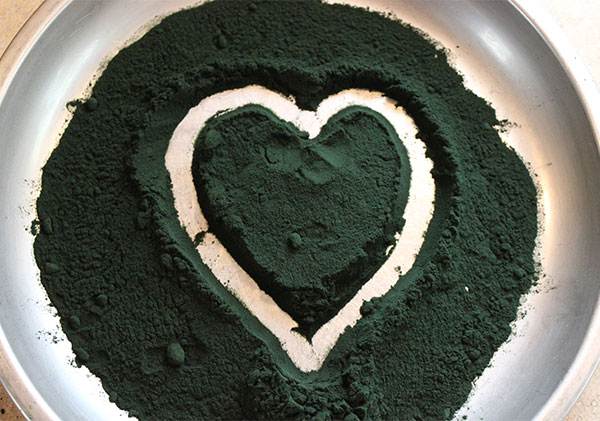
About Cyanotoxins, Microcystin and BMAA
Visit our Aphanizomenon flos-aquae page for more information about the cyanotoxins, microcystin and BMAA.
In recent years there has been some controversy that cyanobacteria-based algae supplements, like spirulina and blue-green algae (AFA), may contain the two cyanotoxins, microcystin and BMAA.
These are contaminants known to be produced from specific cyanobacteria in their blooming stage.
What is Microcystin?
Microcystin is not found in spirulina itself, but in cyanobacteria like: Microcystis aeruginosa, which can inadvertently be collected when harvesting spirulina, especially from wild unmonitored sources. Microcystin growth, for example, is very high in the Great Lakes region of the U.S.
Microcystin is known to cause liver damage in high dose amounts and there have been a few infrequent occurrences where low levels of microcystin have been detected in some microalgae supplements, especially low quality spirulina "obtained from various retail outlets in China." (*)
What is BMAA?
Under certain growing conditions, a neurotoxin called BMAA can be produced by cyanobacteria. When consumed in concentrated amounts, it effects the central nervous system and has been linked to neurodegenerative disorders.
It is important to remember, however, that most BMAA is located in wild waterways not from quality controlled and highly monitored spirulina where pond or tank facilities adhere to appropriate pH and saline levels that eliminate the potential of BMAA growth.
In a 2014 published study, it was reported that BMAA was not detected at low limits of 80 ng/g dry weight in any of the product samples.
Purchasing Quality Spirulina Products
As a precautionary measure, most all higher quality dietary products test for purity as well as other toxic compounds like heavy metals, which can come from polluted water sources.
There is currently (as of 2016) no
enforced purity standards required for manufacturers, so it is
especially important to purchase your bulk powders and supplements from
quality suppliers that are either certified organic and/or maintain product testing for potential toxins.
Our personal experience using these higher quality products for more than 20 years, has only proven to have positive health enhancing results. Nevertheless, you must do your own research if you are at all concerned.
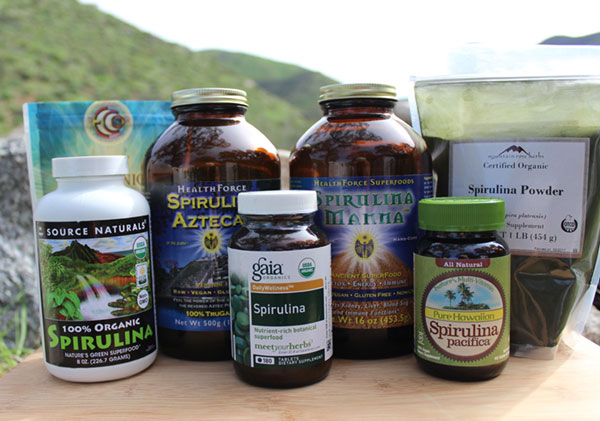
Recommended Spirulina Products
This information was gathered in early 2017 from either the brands website or from direct email communications with the company.
HealthForce Superfoods - They offer Spirulina Manna (A. platensis) and use to offer a Spirulina Azteca (A. maxima). The
company does identity testing on every batch as required by the cGMP to
verify purity. They also offer their own "TruGanics" standard of quality. Their "Manna" algae is grown in a facility located in the Mojave Desert in California.
Mountain Rose Herbs - According to email communications with the company, as of 2017 their certified organic powder is 100% pure and sourced from India. It is grown in man-made culture pools in a liquid nutrient medium made from purified water. They also offer a Certificate of Analysis from their Quality Control Lab upon request. Mountain Rose Herbs
Gaia Herbs - This product, according to their website, is grown in "specialized ecologically maintained raceway ponds under controlled conditions and each batch is tested for purity and potency to insure absolute safety." From our email communications with the company, their A. platensis microalgae comes from a facility located in a rural area of southern India.
Nutrex Hawaii - Offers different Arthrospira products in the form of tablets, powders and protein shake blends. Each lot goes through 15 different quality tests for bacteria, heavy metals and other contaminants with periodic testing for radiation and BMAA, both of which have never be found in their products, according to email communications with the company. Nutrex is based in Kona, Hawaii.
How to Use
Spirulina can be used as a bulk powder, an encapsulated supplement or compressed tablet, depending on your personal preference and affinity for the taste.
To those who love the flavor, it has a pleasant slightly sweet nutty-type taste with an almost floral fragrance. To other palates, however, it can have a strong "fishy" aftertaste and scent. Some of this does, of course, depend on the quality of the product.
It is considered a "food" that can be incorporated into many recipes and doesn't necessarily need to be consumed separately. The algae powder can be added to blended drinks or is easily dissolved straight into a bottle of water for added energizing nutrients.
We personally use it in powder form blended into protein shakes, protein bars, green smoothies, fresh juices, desserts, raw chocolate and dressings or used it straight as a salad topping, similar to nutritional yeast.
It is also commonly utilized by many raw vegans' when making coconut spirulina-lime chips, a popular dehydrated snack food. We also make spirulina ice cubes for our kombucha mojito recipe.
The powder mixed with clay and water, also makes a great DIY face mask that can be applied directly on the skin!
Dosage Amount
When using spirulina for the first time it is best to start with small dose amounts, to see how your body responds, and gradually work your way up to larger quantities if desired.
Keep in mind these dosages are highly dependent on age, body weight and level of daily activity.
Generally speaking, 1 teaspoon, taken once or twice a day, is usually quantified as a lower dose, 1 tablespoon is considered a higher dose and 10-20g is commonly recommended for adult athletes.
Precautions:
Avoid consuming if you have phenylketonuria, hyperthyroidism or if you have a severe allergic reaction to seafood or iodine. Consult your health care provider before intake if you are pregnant, nursing, have a serious medical condition or are taking prescribed medications.
Shop Related Products (About Affiliates & Amazon Associate Paid Links)
Affiliate Disclaimer: This section contains affiliate product links. If you make a purchase through our recommended links, we receive a small commission at no additional cost to you. Thanks for the support.

